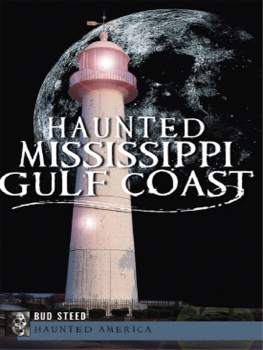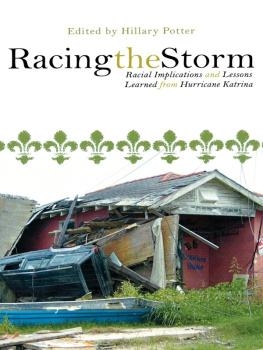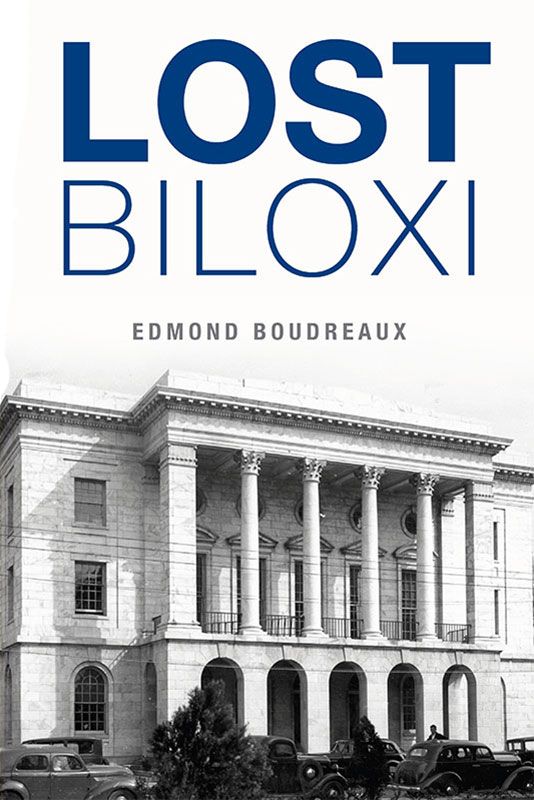

Published by The History Press
Charleston, SC 29403
www.historypress.net
Copyright 2015 by Edmond Boudreaux
All rights reserved
Front cover: Biloxi City Hall. Courtesy of the Alan Santa Cruz Collection .
First published 2015
e-book edition 2015
ISBN 978.1.62585.607.4
Library of Congress Control Number: 2015943181
print edition ISBN 978.1.46711.882.8
Notice: The information in this book is true and complete to the best of our knowledge. It is offered without guarantee on the part of the author or The History Press. The author and The History Press disclaim all liability in connection with the use of this book.
All rights reserved. No part of this book may be reproduced or transmitted in any form whatsoever without prior written permission from the publisher except in the case of brief quotations embodied in critical articles and reviews.
Contents
Acknowledgements
While I have put many years of research into this book, certain people have helped make this book possible. This includes a special group of local historians who influenced me. They are: Julia Cook Guice, Mary Louise Adkinson, Murella Hebert Powell, Kat Bergeron and Dr. Val Husley.
In 1985, I became involved with the Maritime and Seafood Industry Museum located in Biloxi. It developed into a first-class museum, but in 2005, Hurricane Katrina destroyed the building and all the exhibits less than one year after a total remodeling of and addition to the museum. Today, it is located in a new building. The museums records, documents and pictures played a big part in the research for this book. Thank-you to Alan Santa Cruz and Lynn and Sandra Paterson, who allowed their collection of Gulf Coast postcards to become an important part of this book. Thank-you to Bettie Fore for allowing her White family photographs to become an important part of Chapter 17.
The local history and genealogy department of the Harrison County Library System also deserves special thanks.
I would also like to thank The History Press for recognizing Biloxis lost and forgotten history through the printing of this book.
Last but not least, I have a very special appreciation for my wife, Virginia, who edited my work and kept me straight.
Introduction
Lost Biloxi is a collection of stories of historic structures and iconic businesses that made Biloxi a historic city. Each chapter covers a structure lost to hurricanes or lost in time. Each structure had ties to the people who lived in them, the citizens of Biloxi and Biloxis past. Some of the historical structures are the Old Brick House, the Old Spanish House, the Baldwin Wood Lighthouse, the Biloxi City Hall and Market, Gus Stevens Restaurant and Supper Club, Six Gun Junction and the Edgewater Gulf Hotel.
Hurricanes Camille (1969) and Katrina (2005) destroyed historical structures that had become part of the fabric of our lives in Biloxi. Some of these lost structures were the Bailey House, the Father Ryan House, the Tullis-Toledano Manor, the Foretich House, the Brielmaier House and the Dantzler House. Many more were reduced to piles of wood and brick. Before Katrina, there were 160 historical structures listed on the National or Mississippi Register of Historic Places, as well the other structures from the City of Biloxi register of historical structures. Of those historical landmark structures, 60 were lost in Katrina. A few suffered extreme damage but survived. In some cases, historical structures were lost to modern progress, or their histories were forgotten in time. This book is a collection of the history and photographs of some of these structures.
Bailey House
Most locals know the Bailey House only as the old Holy Angels Nursery. Holy Angels Nursery operated from 1942 until the 1990s. Many generations of locals were taken care of by the nuns at nursery and/or attended its kindergarten. The Bailey House has also been referred to as the Wesley House. The house was constructed between 1846 and 1852 and was on the National Register of Historical Places. Over the years, the structure fell into a state of disrepair and would have needed a complete overhaul to restore it to its former beauty. In 2005, its new owners were considering whether it could be restored or possibly torn down and replaced with a modern structure or a parking lot. Yes, it was on the National Register of Historical Places, and most people believe that, because of this, it was protected. The truth was, because of its condition, it could have been condemned. At that point, a structure can be removed from the register.
The Bailey House was the oldest structure on Point Cadet and was Biloxis only early two-story frame house located on the beach. It was located at 204 Beach Boulevard on the corner of Cedar Street and Beach Boulevard.
In the mid-1800s, a subdivision known as Summerville was selling lots on Point Cadet. Nathan Evans Bailey, a vinegar manufacturer from New Orleans, purchased two lots in the Summerville subdivision. The second lot was purchased in 1846, and by 1852, the Baileys had moved from New Orleans to Biloxi. On May 7, 1896, Bailey filed a will in Harrison County leaving all real and personal property to his youngest daughter, Ada C. Bailey. He also listed Nathan E. Bailey as his youngest son. On February 2, 1902, Nathan Bailey died at eighty-eight years of age and was buried in the Biloxi Cemetery. There were some indications that the home was sold in 1901, before his death, to Angeline L. Bailey Dolbear, his eldest daughter. Baileys daughter Ada continued to live in Biloxi until her death in 1924.

The Wesley House, sponsored by the missionary board of the Methodist Episcopal Church South. Courtesy of the Maritime and Seafood Industry Museum .
Over time, a series of events changed the course of history for the Bailey House. Reverend T.L. Melien of New Orleans headed the Methodist Episcopal Church Souths Seashore District. Sometime before 1907, Reverend Melien made a request for more ministries along the Gulf Coast. In 1907, the Womans Board of Home Missions hired and sent Minnie Boykin to work among the seafood industry workers. In Biloxi, Boykin rented a cottage on the corner of Howard Avenue and Oak Street. She successfully recruited volunteers, organized a home missionary society and began her social and religious work. The mission mainly targeted the Bohemians and other immigrant workers. Boykin personally visited any seafood workers home that would have her.
In 1909, the missionary board of the Methodist Episcopal Church South leased the Bailey House, but its doors did not open until October 1910. The mission soon referred to the home as the Wesley House. The Wesley House offered evening school classes for the children and adults who worked in the factories. Sewing and homemaker classes were offered to girls between six and sixteen. In the evenings, there were social games, music and singing for the children. A boys club and a mothers club were started. Of course, there were also the Sunday school classes and religious services.
In addition to the other activities, a daily kindergarten class and nursery was set up. The day nursery was open from 7:00 a.m. to 5:00 p.m. and served two to three meals per day for five cents per day. When the children were old enough for kindergarten, they would attend from 9:00 a.m. to 11:30 a.m. for free.









